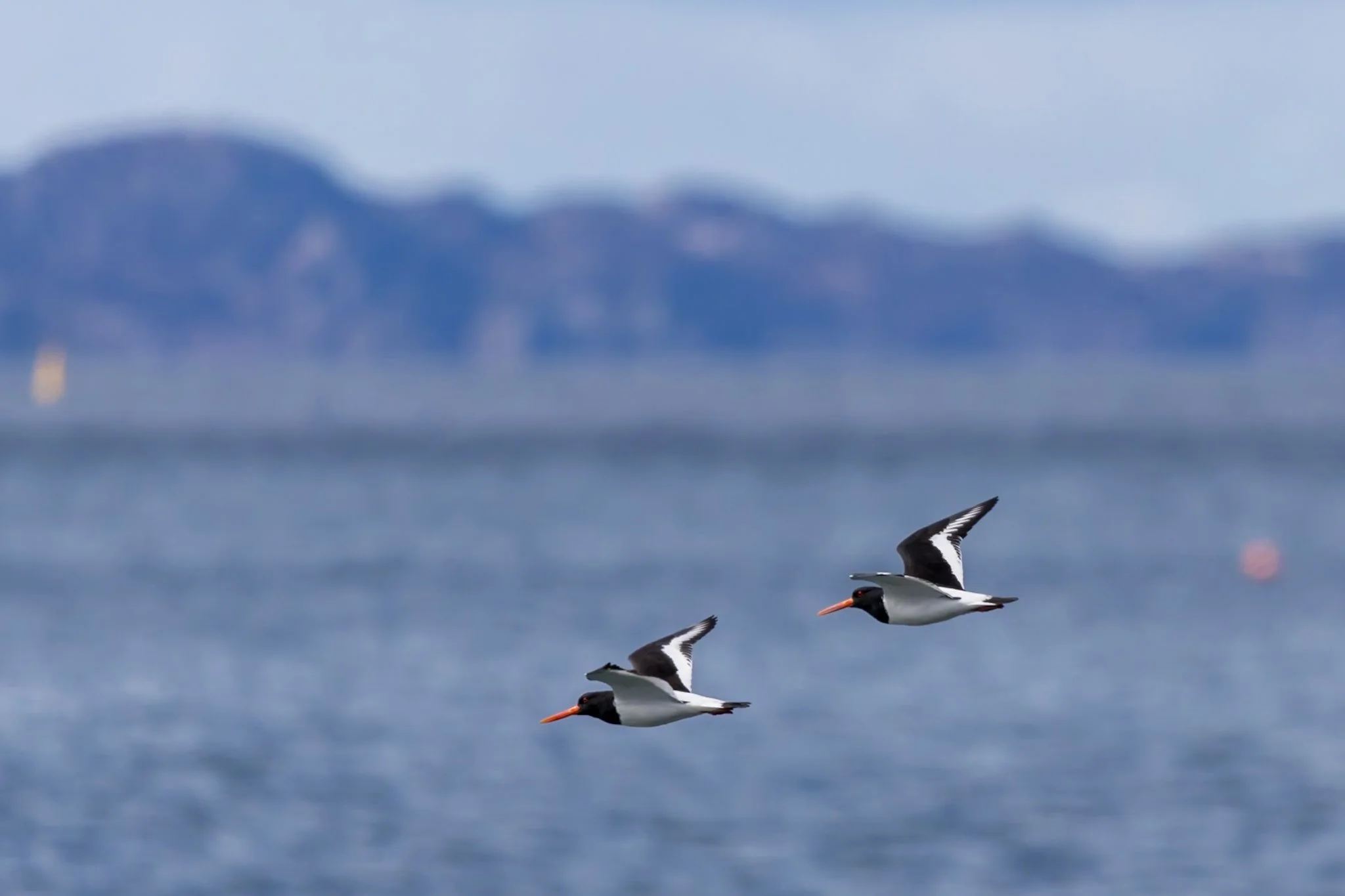Oystercatcher
Few birds bring drama to a shoreline quite like the Oystercatcher. With its black-and-white plumage, bright red bill, and piercing call, the Oystercatcher is a bold and unmistakable presence along the UK’s coasts and estuaries.
Despite their name, these striking waders rarely eat oysters. Instead, they probe, stab, and hammer their way through mudflats and shorelines in search of mussels, cockles, and other shellfish — making them one of the most specialised and entertaining foragers to watch.
Where to See Them
Oystercatchers are widespread and relatively easy to spot in the right habitats. In the UK, they are a year-round presence, with numbers swelling in winter as birds from further north migrate south.
Look for them in:
Coastal beaches and rocky shores
Estuaries and tidal mudflats
Saltmarshes and sandy inlets
Occasionally, inland gravel pits or pastures during the breeding season
They’re common sights at places like the Norfolk coast, Morecambe Bay, and the Dornoch Firth, as well as estuarine reserves such as the RSPB’s Snettisham or Dee Estuary.
Identification
Oystercatchers are bold and easily recognisable. Key features include:
Distinctive black and white plumage — black head and upper parts, with white underparts
A long, bright orange-red bill, slightly flattened at the tip
Pinkish legs and a short, stocky build
Bright red eyes and an intense, high-pitched “kleep-kleep” call
A strong, fast flight with broad white wing-stripes visible in motion
Their confident strut and constant vocalisations often give them away before they’re seen.
Feeding and Behaviour
Oystercatchers are highly adapted coastal foragers. Depending on their habitat, they adopt different feeding strategies:
On rocky shores, they use their chisel-like bills to prise open limpets or hammer through mussel shells.
On sandy beaches or mudflats, they probe the ground to find worms, cockles, and other invertebrates.
They are highly territorial during the breeding season, often nesting on shingle or grassy coastal areas. Outside the breeding season, they form large flocks, sometimes thousands strong, roosting and feeding together along winter shorelines.
Although they are usually seen on the coast, more pairs have begun nesting inland in recent years, especially near gravel pits and rivers.
Breeding and Calls
Oystercatchers typically begin breeding in April. They nest in shallow scrapes on open ground, laying up to three eggs. Chicks are well camouflaged and are mobile soon after hatching, though they remain dependent on their parents for food for several weeks.
Their call is a key feature of their identity: a sharp, repetitive “kleep” that cuts through the coastal breeze. This call is used in flight, during courtship, and as an alarm, often setting off a wave of calls across a flock.
They are also known for a courtship display called “piping,” where pairs call together and circle in tight formation.
Conservation Notes
The Eurasian Oystercatcher is currently listed as Amber on the UK Birds of Conservation Concern list, primarily due to:
Loss of breeding habitat to development or disturbance
Pressure on intertidal feeding grounds from rising sea levels and human activity
Declining shellfish stocks in some regions
Vulnerability to oil spills and marine pollution
Despite these pressures, they remain widespread and are still a familiar sound and sight on many UK shorelines. Conservation of estuarine mudflats and reduced disturbance during breeding are key to their continued success.
Photographing Oystercatchers
Oystercatchers are lively subjects for photographers: bold, noisy, and full of personality.
Tips for photographing them:
Use a long lens and low angle to photograph birds foraging along the tide line
Try shooting in early morning or golden hour light to enhance their plumage contrast
Focus on behaviour: feeding, piping displays, or flocks in flight make for striking images
Respect their space, especially during the breeding season when they can be easily disturbed
Their graphic colours and dramatic shapes stand out beautifully against both shoreline and sky.
Final Thoughts
Oystercatchers are a species full of attitude. Their sharp calls, bright bills, and tireless energy make them a staple of the British coastal birdscape.
They’re a reminder of the rich life that thrives between the tides — and of the delicate balance required to protect it.


